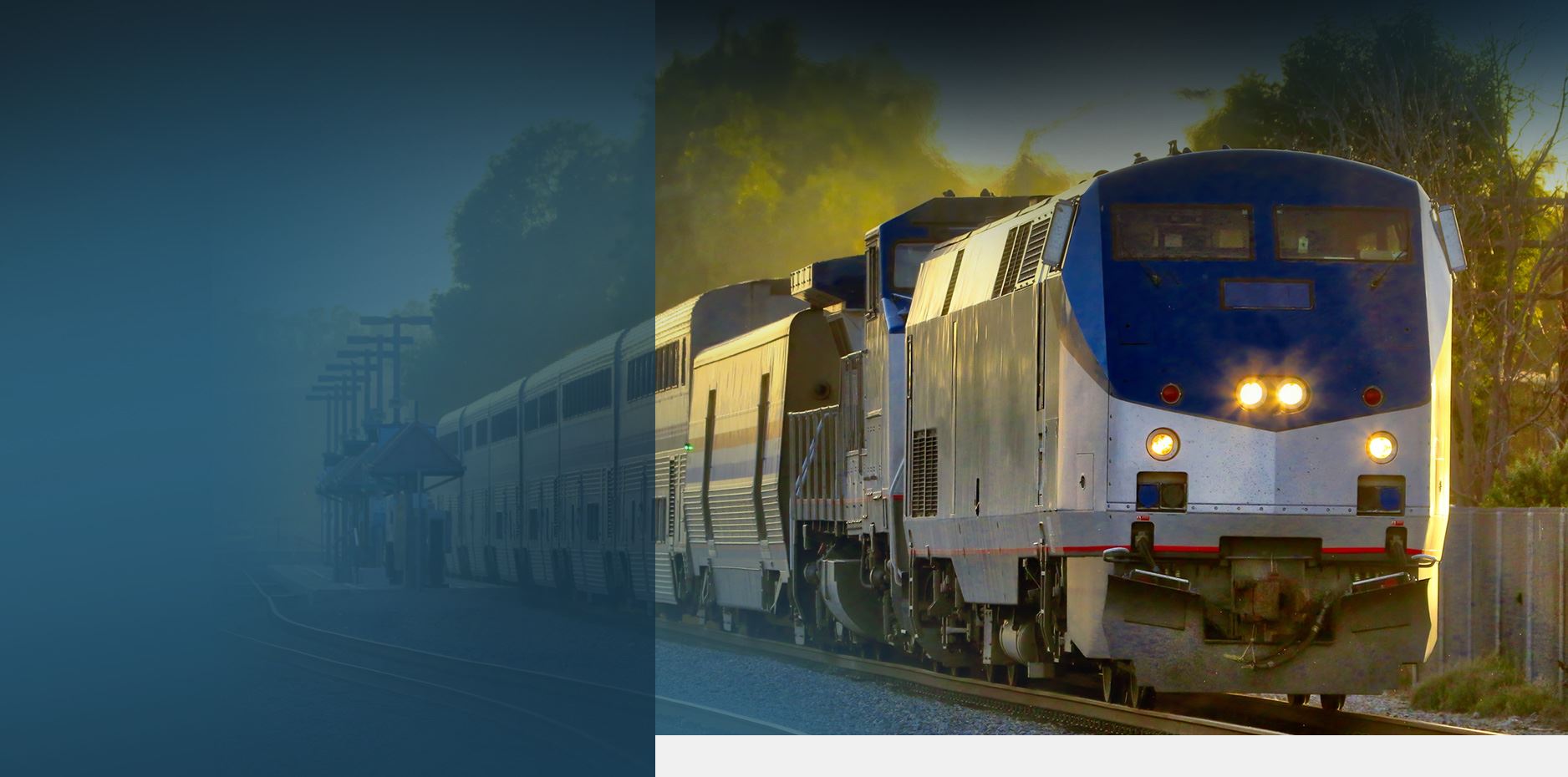
Recent Train Accidents
FREIGHT TRAIN COLLISION IN WEST TEXAS KILLS TWO RAILROAD WORKERS – DECEMBER 18, 2024
A Union Pacific freight train collided with a tractor-trailer in Pecos, Texas on Wednesday, resulting in the deaths of two railroad employees and injuries to three others. The crash, which occurred around 5 p.m., caused the train to derail in the small West Texas community and prompted an immediate response from local emergency services. Federal investigators from the National Transportation Safety Board have dispatched a team to determine the cause of the accident, which marks one of the deadliest rail incidents in the region this year. While the derailment involved rail cars carrying hazardous materials, city officials confirmed that no dangerous chemicals were released during the incident. However, crews worked to contain spilled diesel fuel from the wreckage.
The accident has drawn attention to rail safety in this West Texas community as Union Pacific officials work with local authorities to manage the aftermath of the derailment. If negligence is found to be a contributing factor in this collision, there may be grounds for victims and their families to pursue a lawsuit.
Freight Train Derailment in Colorado Injures 2 – August 23, 2024
On August 23, 2024, a freight train derailed near Boulder, Colorado, injuring two crew members and destroying a rail bridge. The incident occurred overnight near Foothills Hospital. The injured conductors were released from the hospital Friday morning. While some trees were knocked down and fuel spilled from a locomotive, authorities believe nearby Boulder Creek was unaffected. Several roads were temporarily closed but reopened by Friday morning. BNSF Railway is investigating the cause of the derailment, which is expected to require extensive cleanup efforts.
NORFOLK SOUTHERN TRAIN DERAILMENT IN EASTERN PENNSYLVANIA – MARCH 2, 2024
A derailment involving three Norfolk Southern trains near Bethlehem, Pennsylvania resulted in a spill of diesel fuel into the Lehigh River on Saturday morning, though officials reassured the public that there is no danger. The incident, which occurred near the Village of Steel City, is under investigation by the National Transportation Safety Board and the Federal Railroad Administration.
According to preliminary information from the NTSB, an eastbound Norfolk Southern train collided with a stationary Norfolk Southern train on the same track. This caused the train cars to slide onto an adjacent track, where a westbound Norfolk Southern train also collided with the wreckage.
No injuries were reported in the Pennsylvania derailment.
NEW YORK CITY SUBWAY TRAIN DERAILMENT INJURES 25 – JANUARY 4, 2024
On January 4, a northbound New York City Transit train crashed into a northbound 1 line train just north of the 96th Street station in the Upper West Side. At least 22 subway passengers aboard and three crew members sustained injuries in the crash and subsequent derailment.
The incident began when an unruly passenger aboard New York City Transit Train 1345 pulled the train’s emergency brake valve cords on the first five railcars. Officials were unable to reset the brakes so the train was placed out of service.
A railcar inspector cut out the brakes and traction motors on damaged railcars so the cars could be moved to a rail yard for repairs. After the brakes were cut, Train 1345 began moving northbound on track 4 toward 96th Street Station, destined for a nearby yard.
According to the National Transportation Safety Board, the flagger who was situated in the lead railcar and communicating with the transit system supervisor operating the controls said he lost radio communications. The transit system supervisor did not receive the flagger’s instruction to stop the train, which passed through a signal requiring a stop at the end of the 96th Street Station platform. The collision with New York City Transit Train 1427 occurred shortly thereafter.
The NTSB’s preliminary report noted that the track at the collision site was equipped with trip-stops that activate emergency brakes if a train passes through a stop signal. However, because the brakes on the first five railcars had been cut out, the emergency brakes could not be activated.
The injured were taken to area hospitals. A final report on the NYC derailment is expected in 12-24 months.
BROKEN RAIL CAUSED COLORADO TRAIN DERAILMENT – OCTOBER 23, 2023
Preliminary findings from the National Transportation Safety Board (NTSB) indicate a train derailment in Colorado was caused by a broken rail. Federal investigators are trying to determine why the rail broke and why warning systems did not function properly prior to the derailment near Pueblo.
On October 16, 2023, a BNSF train carrying coal derailed while crossing over Interstate 25, causing a bridge to collapse. One person was killed in the incident. Authorities identified the deceased as 60-year-old Lafollette Henderson of Compton, California. Mr. Henderson is survived by six children and 15 grandchildren.
Track problems are a leading cause of train derailments, and the NTSB has long recommended the installation of more automatic monitoring systems to detect track problems. The agency previously called for safety improvements following a fatal Amtrak derailment two years ago along BNSF-owned tracks in Montana. An investigation into this derailment in Colorado is ongoing.
Amtrak Train Derailment in Moorpark, California – June 28, 2023
An Amtrak train derailment in Moorpark, California, left over a dozen people with injuries. At approximately 11:20 a.m., Amtrak Train 14 Coast Star Light collided with a Ventura County irrigation truck that was crossing the tracks at the 11100 W. Block of Los Angeles Avenue. Authorities say 14 train passengers were taken to area hospitals with minor injuries. The truck driver was rushed to a trauma center with serious injuries.
"I thought we were goners," said passenger Theresa Darragh after the derailment. Kimberly Mathews, who was traveling in the same car as Darragh, said she sustained injuries in the train accident. "It feels like somebody took a sledgehammer and just whacked me 50 times," she said.
The train was transporting passengers from Los Angeles, California to Seattle, Washington at the time of the collision. Officials are investigating the cause of the collision and partial derailment.
Norfolk Southern Train Derailment in East Palestine, Ohio – February 3, 2023
A Norfolk Southern train carrying hazardous materials derailed just before 9:00 p.m. in East Palestine, Ohio, near the border with Pennsylvania. While no one was injured in the derailment, the train accident prompted environmental concerns and chemical fears among local residents. The train cargo included a variety of contaminants and carcinogens, including five rail cars' worth of vinyl chloride. In the days following the Ohio train derailment, officials evacuated thousands of residents due to concerns of a possible chemical explosion. Local residents have reported headaches and rashes following the accident. An investigation is underway.
Amtrak Train Derailment Near Mendon, Missouri Kills Four, Injures 150 – June 27, 2022
An Amtrak train crashed into a dump truck at an uncontrolled rail crossing and derailed outside of Mendon, Missouri. The train crash killed four people and injured roughly 150 others. Amtrak said 275 passengers and 12 crew members were onboard the Southwest Chief Train 4 at the time of the crash, which happened at approximately 12:42 p.m. local time. Officials from the National Transportation Safety Board (NTSB) are investigating the cause of the Missouri Amtrak crash.
Fatal Train Derailment Outside of Joplin, Montana - September 25, 2021
On September 25, 2021, an Amtrak train derailed near Joplin, Montana, killing at least three people and injuring dozens more. Eight cars from the Empire Builder train left the tracks at around 4:00 p.m. local time. Amtrak told the media that 141 passengers and 16 crew members were on board at the time.
The National Transportation Safety Board (NTSB) dispatched a team of investigators to Montana. They will be tasked with uncovering the cause (or causes) of this tragic accident.
Preventable South Carolina Amtrak Train Crash Kills Two, Injures Many – February 4, 2018
An Amtrak train collided with an idle CSX freight train in Cayce, South Carolina in the early morning hours of Feb. 4, 2018. The crash—the fourth fatal Amtrak train incident in seven weeks—killed two train crew members and left more than 100 other people with injuries.
According to NTSB Chairman Robert Sumwalt, it appears the CSX train crew did not flip the track switch back to the mainline setting after pulling the freight train onto a side track. “The key to this investigation is learning why that switch was lined that way because the expectation was, of course, that the Amtrak train would be operating like this,” said Sumwalt as he pointed to a whiteboard showing the passenger train’s correct southbound direction.
Sumwalt added that if the signal system was functioning properly, it would have alerted the train crew to the position of the switch.
Washington Amtrak Train Derailment – December 18, 2017
On Dec. 18, 2017, Amtrak Train 501 derailed on an overpass roughly 50 miles south of Seattle, Washington. The Amtrak derailment resulted in multiple fatalities and left an estimated 100 people with injuries.
Amtrak Train 501 was making its inaugural trip with paying passengers on a new route from Seattle, Washington to Portland, Oregon when it derailed onto Interstate 5, one of the busiest roadways in the state. The train accident left several rail cars scattered on the highway below the overpass, with one car perilously dangling from the bridge. Approximately 80 passengers and five crew members were on the train at the time of the crash.
Biloxi Train Crash Details Revealed – March 19, 2017
As the National Transportation Safety Board (NTSB) and local police work to uncover more information on the March 7, 2017 fatal Biloxi train and bus crash, clearer details of the accident are beginning to emerge. At the same time, three lawsuits have been filed in connection with the tour bus-train crash, which resulted in the death of four, and further lawsuits have been rumored. The tragedy is a stark reminder of the devastating consequences train accidents can have.
Brooklyn Train Crash Injures 103 – January 4, 2017
A Brooklyn train crash has injured 103 people, after a Long Island Rail Road train derailed on January 4, 2017 during the morning commute. Although most injuries were considered minor, some passengers reportedly suffered back and neck injuries during the train accident when they were hurled onto the floor. The National Transportation Safety Board (NTSB) has said it will investigate the Brooklyn train crash and the Federal Railroad Administration (FRA) was also on its way to the scene. The train operator, conductor and brakeman will all be interviewed in an attempt to determine what caused the train crash.
Long Island Train Crash Injures Passengers and Halts Service – October 10th, 2016
About 600 commuters faced the worst kind of interruption to their travels on the night of October 8, 2016 when the commuter train they were riding in collided with a maintenance train traveling alongside them. The Long Island train crash caused the first three cars of the Long Island Rail Road (LIRR) commuter train to derail and resulted in injuries to 33 people.
Commuter Train Crashes into Hoboken Train Station During Rush Hour – September 29, 2016
A commuter train crashed in the busy Hoboken train station during rush hour on Thursday morning, killing at least one person and injuring over 100 more. The deadly Hoboken train crash was initially reported at around 8:45 a.m.
Hoboken Terminal is one of the largest and busiest in the area, transporting more than 100,000 people per day between New Jersey and New York. Thursday’s fatal train accident could not have happened at a worse time, as many commuters were either aboard New Jersey Transit train or standing on one of the terminal’s platforms.
Amtrak Southwest Chief Train Derailment, Cimarron, Kansas – March 14, 2016
An Amtrak train transporting passengers from Los Angeles to Chicago derailed just after midnight on March 14, 2016. The Amtrak derailment left over 30 people with injuries. Two of the victims were airlifted to a medical center in Texas with serious injuries. According to National Transportation Safety Board (NTSB) officials, the Amtrak train was going approximately 60 miles-per-hour when the engineer saw a “significant” bend in the track and immediately pulled the emergency brake. It took roughly 18 seconds for the train to come to a complete stop. Eight of the 10 train cars derailed. While an investigation into the Amtrak derailment is in its early stages, NTSB officials have said the bend in the track appears to have been caused by a delivery truck hitting and shifting the track at least 12 inches. The investigation is ongoing.
CSX Train Derailment, Maryville, Tennessee – July 2, 2015
A CSX train carrying hazardous materials, including acrylonitrile, a highly toxic and flammable liquid, derailed due to unknown causes. The train wreck caused a firery plume of chemicals to spread over the area of Maryville, Tennessee and forced a mandatory evacuation of all people in a two mile radius of the train accident. The Environmental Protection Agency, along with several other authorities, was called to investigate the effects of the chemical spill while the FRA (Federal Railroad Administration) investigated the cause of the train crash. After this recent train accident, 87 people were treated at a nearby hospital and another 36 were admitted, including 10 first responders, due to respiratory issues caused by inhaling fumes from the burning chemicals. Additionally, 5,000 residents were displaced after the accident and people were asked not to drink or even contact the water until further testing was completed. Subsequently, dead fish in the nearby creek were determined to have died at the same time as the train crash, pointing to more possible water contamination.
Amtrak Northeast Regional Train Derailment, Philadelphia, Pennsylvania – May 12, 2015
Amtrak 188 went through a curve going twice the speed limit and derailed, causing three of the rail cars to roll onto their sides in Philadelphia. After the train crash, eight fatalities and over 200 injuries were reported. Unfortunately, while the tracks had been installed with the Positive Train Control (PTC) system that could have slowed the locomotive and prevented the train wreck, the PTC had not been operational due to “budgetary shortfalls, technical hurdles and bureaucratic rules.” The railroad had been trying for years to purchase from the Federal Communications Commission (FCC) the necessary airwaves to use PTC but negotiations had proven unsuccessful. The National Transportation Safety Board (NTSB) and FRA are still investigating this train crash. Wisner Baum is currently representing several of the passengers injured in this recent train derailment.
Metrolink Train Crash, Oxnard, California – February 24, 2015
An unfortunate train accident occurred after a pick-up truck hauling a trailer turned the wrong way at an intersection and began driving along the tracks. When the truck became stuck on the tracks, the truck driver fled, abandoning his vehicle, which was facing the train with its headlights and hazards on. The driver never called authorities to report the dangerous conditions. When the Metrolink engineer saw the seemingly occupied vehicle on the tracks he used the horn and applied the emergency brake in an attempt to avoid the train crash, but was unable to stop the train in time. The resulting accident caused the train to derail, killing Metrolink’s senior most engineer and injuring 31 passengers along with two crew members. The NTSB and the FRA opened investigations into this train crash. This is the twelfth FRA investigation into train accidents at this crossing in the past ten years.
Arkansas & Missouri Railroad Sightseeing Train Crash, West Fork, Arkansas – October 16, 2014
An Arkansas & Missouri Railroad sightseeing train carrying tourists on a fall-foliage tour in the Ozark Mountains, was unable to go up a grade due to slippage from wet leaves on the rails which caused the train to stall. After reporting the issue another train was sent to repair the disabled one, but the crew of the train coming to perform the repairs was never given the exact location of the stopped train. Blindly searching for the stopped locomotive, the repair train rounded a curve and smashed into the back of the sight-seeing train. The resulting train accident injured all 44 people on board both trains, including several who were in critical condition.
Chicago Transit Authority Train Crash, O’Hare Subway Station, Chicago, Illinois – March 24, 2014
At least 32 people were injured due to a train wreck inside the Chicago O’Hare International Airport subway station. The Chicago Transit Authority train overran a bumper and jumped the tracks, causing two of its eight railcars to plow through the station and up an escalator. The investigation into this train accident found that the train operator, who had only been working on this post for 60 days, fell asleep on the job after working a large amount of overtime. The train operator also admitted to falling asleep and overshooting another station stop just one month prior to this train accident. Investigations into the causes of this crash were made more difficult because the train lacked an event recorder. The NTSB noted that two backup braking systems, which should have worked to prevent the train accident, failed to stop the train in time.
Metro-North Railroad Hudson Line Derailment at Spuyten Duyvil, The Bronx, New York City – December 1, 2013
The first Metro-North train crash to result in fatalities occurred after the engineer went into a “daze” while operating the train and drove it around a curve at over three times the posted speed limit. The excessive speed caused the train to derail, killing four and injuring 61. The NTSB investigation into the train accident found that the engineer was suffering from undiagnosed sleep-apnea which may have contributed to his sleepy or inattentive state. The NTSB blamed both Metro-North and the FRA for not having screening requirements for sleep disorders in employees in “safety sensitive” positions. The NTSB also highlighted the fact that a Positive Train Control (PTC) system would have entirely prevented this train wreck.
Lac-Mégantic Rail Disaster, Quebec, Canada – July 6, 2013
One of the most destructive and costly train accidents in history, took place just a few years ago. A freight train hauling crude oil from North Dakota to Eastern Canada was experiencing trouble with its engine. Expecting the large quantities of smoke it was producing to die down overnight, the Montreal, Maine and Atlantic Railway (MMA) operating the train, decided they would deal with the problem in the morning and ordered the train be parked for the night. The engineer, according to MMA requirements, set the hand brakes on seven of the rail cars and left the train’s engine on in order to continue supplying power to the air brakes before leaving. Smoke continued to pour from the distressed train and police and fire departments were called to the scene when a fire broke out in the engine. The authorities shut down the locomotive’s engine in order to prevent further fuel going to the fire and in doing so, cut off the power to the air brakes. The seven hand brakes failed to hold the 72-car train allowing it to roll downhill toward the town of Lac-Mégantic. The train derailed in the downtown center and exploded into flames as nearly six million liters of petroleum oil spilled from the train accident. The fires immediately destroyed most of the downtown area before spreading to the rest of the town as oil went through the sewers. In the end, most of the town center was destroyed and almost 50 people were reported dead or missing. Due to this high profile train wreck, the MMA was criminally investigated and it eventually filed for bankruptcy. Afterward, many changes were put in place for all Canadian railway operators in order to prevent similar tragedies.
Metro-North Railroad Train Derailment, Fairfield, Connecticut – May 17, 2013
A massive train accident happened after an undetected break in a pair of joint bars on the railroad track caused a Metro-North train to derail. The railcars then fell onto the adjacent track where they were struck by another Metro-North passenger train heading in the opposite direction. Between the two locomotives involved, at least 72 people were injured during the train accident, some critically. Sadly, this accident was very much preventable. During an inspection two days before the train crash, the railroad had discovered vertical track movement around the rail joint. However, Metro-North chose to defer scheduled maintenance after deeming the problem insufficient to merit immediate repair, even though a cracked joint bar had been repaired only a month prior in the same area. In its investigation, the NTSB found that Metro-North did not have a comprehensive program in place to prioritize corrective track maintenance once having been alerted to the various issues at hand.
Burlington VIA Derailment, Canada – February 26, 2012
A devastating train wreck occurred in Burlington, Ontario, Canada after the crew of the VIA train misread or failed to notice a signal that called for the train to slow down before a track change. The train proceeded at its regular speed of 67 mph instead of slowing to the required 15 mph. The high speed caused the train to derail at the crossover between tracks, resulting in three deaths and 46 injuries. The investigation into the causes of this train accident put forth several theories as to why the crew failed to obey the slow signal, including that a track change at that crossover was unusual, a maintenance crew working ahead of the train may have diverted focus, and that the advance warning signal was given just before a stop—which may have caused the crew to forget about the warning.
California Zephyr Amtrak Train Crash, Reno, Nevada – June 24, 2011
Due to improper truck maintenance and driver inattention, a 50,000-pound semi failed to brake soon enough to stop at a red signal and crashed through the warning gate into a California Zephyr Amtrak train. Unable to stop in time, the huge tractor-trailer punched through the side of the train, killing six people and injuring 15 in this horrific train wreck. As a result, the NTSB recommended that passenger trains be upgraded to meet side impact strength requirements. Most of the blame was placed on the trucking company for failing to maintain the brakes on the vehicle and allowing its driver, who had a known history of moving violations and accidents, to operate the truck while experiencing fatigue, using a cell phone, and having an ankle injury. Unfortunately, because of the trucking company’s negligence in hiring and training their driver, many people were killed or seriously harmed in this train crash.
Washington Metropolitan Area Transit Authority (WMATA) Metrorail Train Crash, Washington, D.C. – June 22, 2009
A faulty track circuit failed to report that a stretch of railroad track was already occupied by a stopped train, which also failed to engage the Automatic Train Control system. Due to the failed circuit, the stopped train was basically invisible to the rail system and proceeded to give green lights, commanding another train further down the tracks to continue at full speed. The oncoming train applied the emergency brake once the stopped train was visible, but sadly it was not enough to prevent the train wreck. In the resulting investigation into the causes of this train crash, it was discovered that six other circuits had been malfunctioning and that the faulty circuit responsible for this train accident had been malfunctioning since 2007, yet had never been repaired. The design of the train cars were also singled out for a lack of crashworthiness that had been noted by safety agencies several years prior, but had continued to be used by WMATA. As a result of this crash, the railroad tested and fixed the faulty track circuits and also retired the use of the un-crashworthy railcars. Nine died and 52 others were injured in this train accident.
Metrolink Commuter Train / Union Pacific Train Crash, Chatsworth, California – September 12, 2008
A train wreck that will live on as one of the deadliest in our nation’s history, occurred when a Metrolink commuter train ran a red stop signal and proceeded onto a single track on which another freight train was already traveling in Chatsworth, California. The trains collided head-on and both derailed. After the train accident it was discovered that the Metrolink engineer was texting. In his distraction, the operator never applied his brakes. Upon seeing the oncoming passenger train, the freight train engineer did apply the emergency air brakes, but, sadly, it was not enough to avoid the train crash. Due to this incident, 25 people lost their lives and 135 were injured. As a result of this train accident, bans against using cell phones while operating a train or car were implemented in many areas across the country, and the argument in favor of Positive Train Control (PTC) intensified. Wisner Baum represented eight passengers from the Metrolink Chatsworth crash, including two individuals who died and six who were badly injured.
If you or a loved one was involved in a train crash, contact our attorneys today. You can also read more about train accident news at our blog.

OVER $4 billion
in verdicts & Settlements
Our top priority is to devise customized legal strategies that are tailored to the unique legal needs of our clients, no matter how simple or complicated their situations, might be.
-
$2.0 Billion Verdict Personal Injury
In May of 2019, the jury in the case of Pilliod et al. v, Monsanto Company ordered the agrochemical giant to pay $2.055 billion in damages to the plaintiffs, Alva and Alberta Pilliod, a Bay Area couple in their 70s.
-
$289.2 Million Verdict Personal Injury
On Aug. 10, 2018, a San Francisco jury ordered Monsanto to pay $39.25 million in compensatory damages and $250 million in punitive damages to Mr. Johnson, a former groundskeeper who alleged exposure to Monsanto’s herbicides caused him to develop terminal non-Hodgkin lymphoma.
-
$265 Million Settlement Fatal Train Crash
In 2016, Wisner Baum attorney Timothy A. Loranger and six other attorneys in the Plaintiffs’ Management Committee were able to secure a $265 million settlement for victims of the 2015 Amtrak 188 derailment in Philadelphia, one of the largest in the U.S. for 2016.
-
$105 Million Settlement Pharmaceutical Settlement
Wisner Baum obtained $105 million on behalf of multiple clients involved in a pharmaceutical negligence case.
-
$80 Million Verdict Personal Injury
Wisner Baum attorneys served on the trial team in the case of Hardeman v. Monsanto Company, which resulted in an $80 million jury verdict for the plaintiff, Edwin Hardeman.

Our Case Results

-
$265 Million Settlement Fatal Train Crash
In 2016, Wisner Baum attorney Timothy A. Loranger and six other attorneys in the Plaintiffs’ Management Committee were able to secure a $265 million settlement for victims of the 2015 Amtrak 188 derailment in Philadelphia, one of the largest in the U.S. for 2016.
-
$3.5 Million Settlement Fatal Train Crash
Wisner Baum secured a $3.5 million settlement on behalf of an individual who died on a train.
-
$2 Million Settlement Fatal Train Crash
Wisner Baum obtained a $2 million settlement on behalf of a passenger who died on a train.
-
$2.8 Million Settlement Wrongful Death
Wisner Baum obtained a $2.8 million wrongful death settlement for a train passenger.

Client-Focused Representation
REVIEWS & TESTIMONIALS
We believe our track record speaks for itself. But you don’t have to take our word for it. See what our clients have to say about working with us.
-
"I Can’t Imagine a Better Law Firm"
Multiple lawyers recommended Wisner Baum to me and I have been consistently impressed with the quality of their work.
- Best Law Firms Survey -
"They Are About Changing the Systems..."
Wisner Baum are not only amazing attorneys but more importantly, they are activists. They are about changing the systems which got us into trouble in the first place. They understand their role in the process of making change.
- Kim Witczak -
"Top Legal Minds in the Country"
The Wisner Baum firm has some of the top legal minds in the country; they are driven, determined, trustworthy, ethical and passionate.
- From Best Lawyers® Best Law Firms




.2111111147550.jpg)
